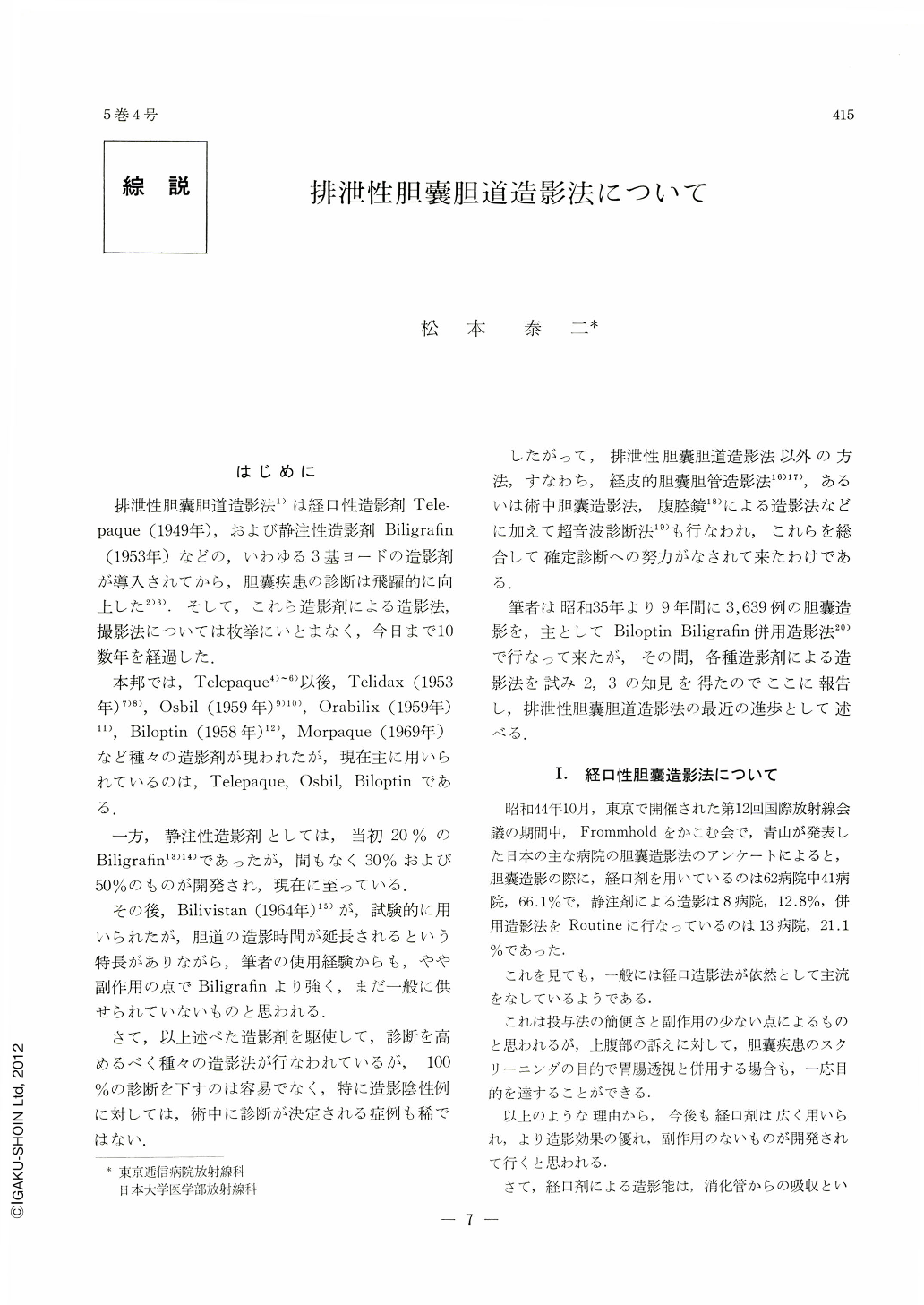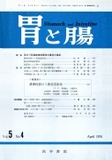Japanese
English
- 有料閲覧
- Abstract 文献概要
- 1ページ目 Look Inside
はじめに
排泄性胆囊胆道造影法1)は経口性造影剤Telepaque(1949年),および静注性造影剤Biligrafin(1953年)などの,いわゆる3基ヨードの造影剤が導入されてから,胆囊疾患の診断は飛躍的に向上した2)3).そして,これら造影剤による造影法,撮影法については枚挙にいとまなく,今日まで10数年を経過した.
本邦では,Telepaque4)~6)以後,Telidax(1953年)7)8),Osbil(1959年)9)10),Orabilix(1959年)11),Biloptin(1958年)12),Morpaque(1969年)など種々の造影剤が現われたが,現在主に用いられているのは,Telepaque,Osbil,Biloptinである.
一方,静注性造影剤としては,当初20%のBiligrafin13)14)であったが,間もなく30%および50%のものが開発され,現在に至っている.
その後,Bilivistan(1964年)15)が,試験的に用いられたが,胆道の造影時間が延長されるという特長がありながら,筆者の使用経験からも,やや副作用の点でBiligrafinより強く,まだ一般に供せられていないものと思われる.
さて,以上述べた造影剤を駆使して,診断を高めるべく種々の造影法が行なわれているが,100%の診断を下すのは容易でなく,特に造影陰性例に対しては,術中に診断が決定される症例も稀ではない.
したがって,排泄性胆囊胆道造影法以外の方法,すなわち,経皮的胆囊胆管造影法16)17),あるいは術中胆囊造影法,腹腔鏡18)による造影法などに加えて超音波診断法19)も行なわれ,これらを総合して確定診断への努力がなされて来たわけである.
筆者は昭和35年より9年間に3,639例の胆囊造影を,主としてBiloptin Biligrafin併用造影法20)で行なって来たが,その間,各種造影剤による造影法を試み2,3の知見を得たのでここに報告し,排泄性胆囊胆道造影法の最近の進歩として述べる.
Various methods of excretive cholecysto-cholangiography have been tried, besides a simple peroral or intravenous administration, to non-visualized cases. Of 3,639 cases of cholecysto-cholangiogra phy by means of co-administration of Biloptin and Biligrafin done by the author for the past 9 years, 1,074 cases belonged to diseases of the bile duct, and the non-visualized amounted to 88, or 8.1%. Assuming that the causes for the negative results are mostly due to inflammations of the bile duct, the author tried various means of administration, including daily dosis of 6 tablets of Betamethasone (Rinderon 0.5 mg) lasting for 1 week. The results are that of 70 cases of nonvisualization, 53 or 75.7% have shown radiopaque improvement, thus making the diagnosis feasible. Besides this consecutive steroid administration, there are such methods as successive peroral medication, double dosis of Biligrafin with glucose tolerance, Biligrafin and choleretica with glucose tolerance, co-administration of morphine and intravenous infusion of Biligrafin (DIC). A reference has been made to these methods, laying stress on the author's new method of visualization by combined use of steroid with DIC. As against the Niizuma's report that DIC method was ineffective, it is presented here that in the case of healthy persons there is no difference in visualization between the DIC method and its combined use with steroid, and his report is thus far pertinent, but in non-visualized cases the DIC method remains a very effective means to produce satisfactory results.

Copyright © 1970, Igaku-Shoin Ltd. All rights reserved.


